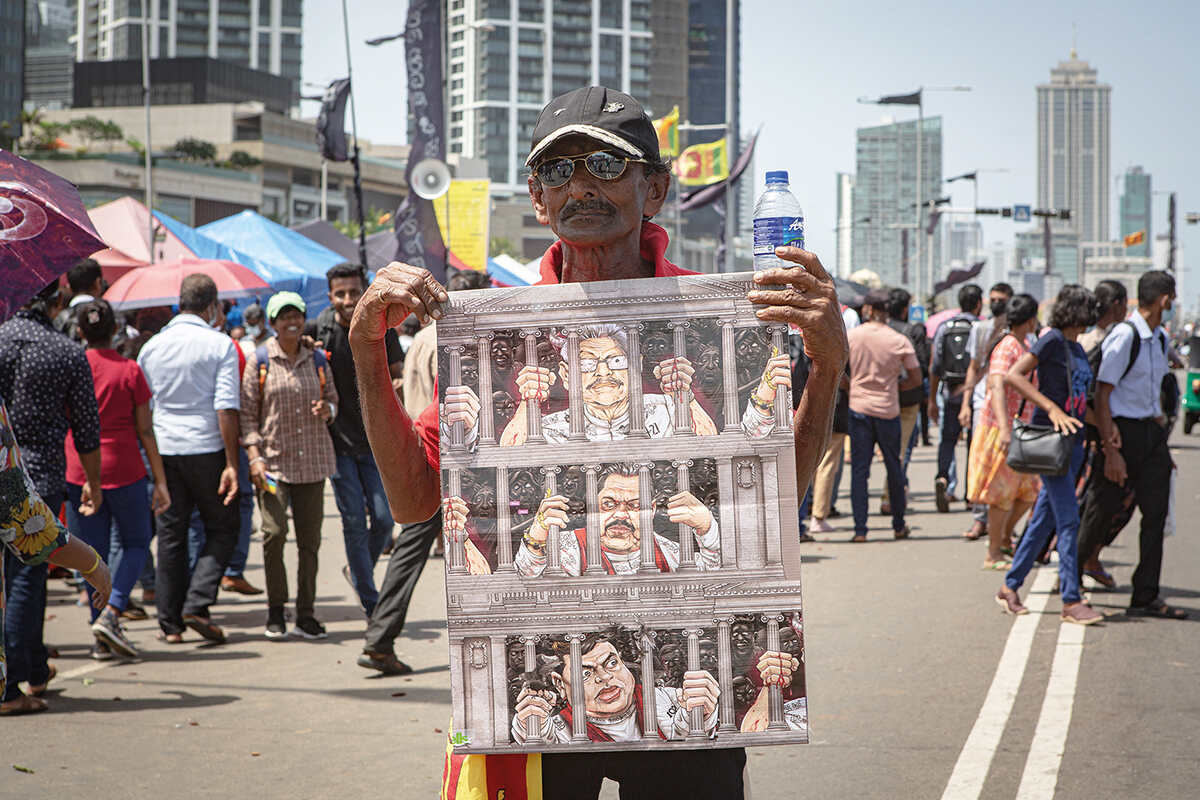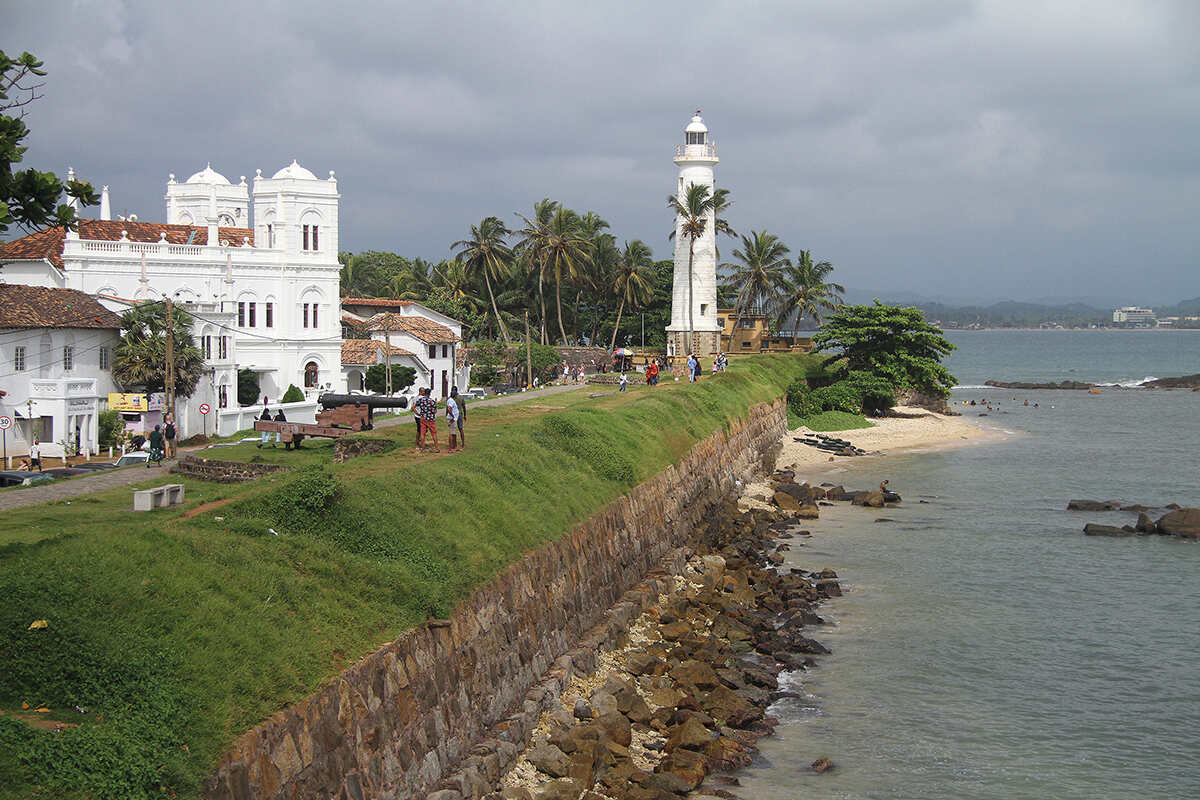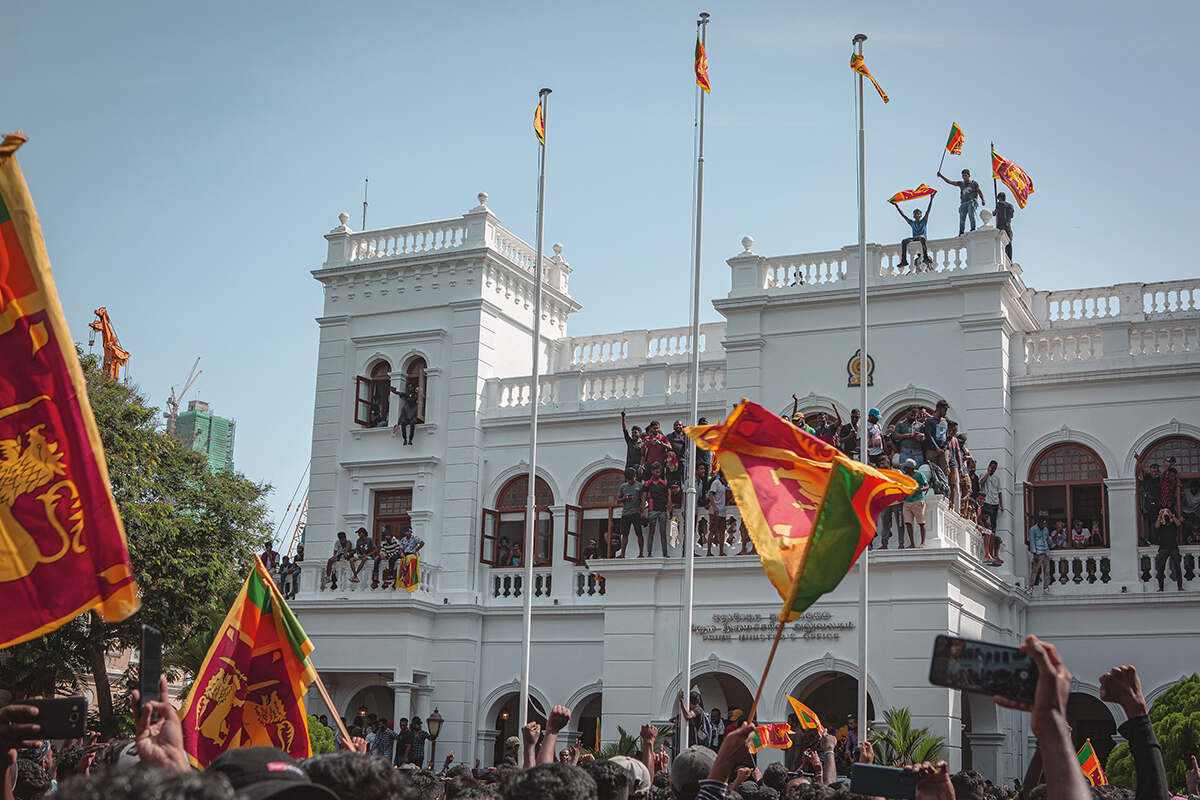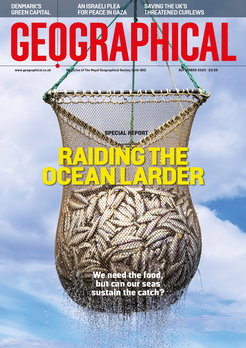
Fleeing politicians, mass demonstrations, 70 per cent inflation and fuel rationing –
Sri Lanka seemed to be on the brink of disaster last summer. Nick Redmayne returns to the island to see how it’s coping after a tumultuous year
By Nick Redmayne
In late 2009, I travelled to northern Sri Lanka following the collapse of the Liberation Tigers of Tamil Eelam’s (LTTE) violent 30-year insurgency. The Colombo government’s emphatic, and to some surprising, military victory had come at a cost. President Mahinda Rajapaksa and his brothers – defence minister Gotabaya Rajapaksa and presidential adviser Basil Rajapaksa – had overseen a 40 per cent increase in the size of the Sri Lankan Army and a rise in the defence budget to four per cent of GDP. To facilitate this extraordinary expansion, China reportedly provided US$1 billion annually, while Russia, Iran and Libya agreed preferential terms in respect of oil and arms sales.
The uncompromising peace was broadly welcomed across an island wearied by conflict and was even accepted in the Tamil north. Taking a heavily militarised road to Trincomalee, I had asked my Sinhalese driver about the government’s future strategy. ‘This president said that if he was elected, he’d end the war. The war has ended. We will give him time,’ he’d replied.
By 2022, time had run out for the Rajapaksa political dynasty, and for Sri Lanka. Decades of nepotism, corruption, financial mismanagement and catastrophic incompetence came to a head in July. Inflation had spiralled, fuel and medical supplies faltered, and power cuts ensued across the country. Street protests erupted in Colombo, demanding an end to the Rajapaksa government. The army was deployed, but before long, protesters had occupied the president’s residence and were taking selfies in his swimming pool. Gotabaya Rajapaksa fled the country on a military plane, followed by Mahinda Rajapaksa. Basil Rajapaksa resigned as an MP, and the entire government stepped down.

When I visited in November, the economic chaos and political turmoil had receded. A Colombo Arpico, one of the country’s big supermarket chains, was well stocked with both fresh and store-cupboard produce. Prices of locally produced goods had stabilised, although in many cases at twice pre-crisis levels. Needless to say, wages had not doubled. What started as an economic catastrophe and evolved into political turmoil had morphed into a cost-of-living crisis that affected all Sri Lankans.
An evening at Colombo’s Rowing Club saw office workers relaxing over drinks. ‘We are optimistic,’ said Laila, an advertising executive. ‘At a mid-level we grumble, but we’re doing okay. The fuel was generally a nightmare. People were really suffering. But as we say, “they shared tea” and worked it out.’ Fuel is currently rationed, at 20 litres per week for private cars, more for tourist vehicles.


Elsewhere in town, at the Park Street Trattoria, Ash Handy mixed an unapologetically heady cocktail of local ingredients. ‘I’m from Jaffna,’ he said. ‘They’re even making sparkling wine there now. There’s chalk soil, great sunshine. It seems to work.’ I asked about the protests. ‘You kinda need to stand up at some point,’ he replied. ‘There was no petrol, no gas… So what you gonna do? Go protest of course.’
Had it been worth it, I enquired. ‘Yes, for sure. The voice of the people for once has been heard, but the next six months will be key. We really need an injection of capital. Right now, Sri Lankans are leaving, going to the UAE, like rats leaving a sinking ship.’ I asked about his plans. ‘I spent six years in London. It was enough. It’s important to go away, because when you come back, you see what you’ve got. As for the politics, it’s very good to know that ordinary people can make a difference. Petrol is a problem and I’m still bicycling to work. This is the fittest Sri Lankans have ever been.’
Across Colombo, construction is ever present, although intensity of activity is variable. Most significant, and controversial, is the Port City development, where 270 hectares of reclaimed land is being developed. The project was unveiled in 2014 when President Mahinda Rajapaksa met with Chinese leader Xi Jinping in Colombo. Part of China’s immense Belt and Road Initiative, in return for a US$1.4 billion investment, the China Harbour Engineering Company was granted a 99-year lease on 43 per cent of the land. Envisaged as a rival to Dubai or Hong Kong, the glittering reality of Port City was scheduled to be 25 years in the making. Proponents cite the scarcity of land in Colombo and the commercial opportunities that Port City will create.
When I visited, the project resembled a giant sand pit. Construction was proceeding, although with little apparent urgency. A sail charter operation, a go-kart track, a beachfront restaurant and a driving range were up and running. Those unconvinced by Port City point to Hambantota, another Chinese port development partnership. Here a 99-year lease for 70 per cent of the port facility was granted to China Merchants Port Holdings Company in return for US$1.12 billion. Instead of paying off construction loans, President Mahinda Rajapaksa used the money to shore up Sri Lanka’s balance of payments. The port has yet to turn a profit. Meanwhile, loan repayments continue to deplete Sri Lanka’s finances. The harshest critics suggest that Sri Lanka will be forced to cede all interest in the port. A recent controversial docking at Hambantota by a Chinese missile-tracking vessel has further unsettled relations with India, which has concerns over Chinese economic and military influence in the region.

Sri Lanka’s tourism industry may be the country’s get-out-of-jail card – a way to replenish its foreign exchange reserves and quickly build new economic foundations. In 2018, tourism accounted for 5.6 per cent of Sri Lanka’s GDP, but that figure dropped to 0.8 per cent in 2020.
Galle, on the southwest coast, famous for its World Heritage-listed Dutch-colonial fort and old town, is at the heart of this lucrative if fragile business. Driving the new E01 highway from Colombo, it was a roughly two-hour journey. Traffic was light, perhaps due to fuel rationing. The old town was quiet. Galleries and shops were mostly empty. Some Sri Lankan day trippers were eagerly buying ice cream, but only a few foreign tourists were visible, almost exclusively Russian. I spoke to a café owner on Pedlar Street. ‘Russians are here. They’re hippy tourists,’ he said dismissively. ‘They don’t spend anything in the cafes and restaurants.’

Outside Galle, at the upscale resort of Tabula Rasa, Max the dog was my only breakfast companion. Rooms were otherwise empty. I spoke to Roshan Adhihetty,
the manager. ‘We opened in 2019,’ he told me. ‘Things were improving after the Easter bombings and then we had to close for Covid. Now, after the protests, we are optimistic.’
Further down the hospitality food chain it was a similar story. Thilina Pathirana runs Village Rider cycling and cookery tours in Galle District. ‘In the last couple of months I’ve taken just one Spanish couple on a short ride,’ he said. ‘That’s it. Normally we should be busy until Christmas.’
Later, on Unawatuna Beach, I ordered a cold Lion lager at the Happy Banana and swatted the complementary mosquitoes. The ecologically sensitive reef of Buona Vista lay just offshore, while the important Hindu cultural site of Rumassala, featured in the epic Ramayana, was just above the sand. How the brother of former president Sirisena gained permission for Unawatuna’s other landmark, the 200-room, five-star, Araliya Resort, remains a mystery. A backpacker vibe prevailed. Cafes, many with Cyrillic menus, had more foreign customers, mostly Russian.
Taking a train north to Jaffna, I waited on the platform. Suresh, a hotel driver from Kandy, stood with me. ‘Since the protests, nothing has really changed. The MPs are the same. One or two are good, the rest take care for themselves,’ he said. ‘The main parties are two sides of the same coin. They make agreements with the Chinese. We are like the frog in the well. We can’t see what’s going on. Years ago, the government opened up the economy. We couldn’t compete with cheap imports, many from China, and our manufacturing was destroyed. Soon Sri Lanka won’t exist and we’ll all be speaking Chinese.’
At the heart of the country’s Tamil north, Jaffna was Sri Lanka’s second city before citizens fled as it became keenly contested during the civil war. Ninety-three per cent Hindu and effectively off the tourism radar for years, Jaffna has an immediately different feel.

At the Nallur Kandaswamy Temple, a city landmark, I met Thamiliban, an educated young man born in Jaffna. ‘The war is over but the problems remain,’ he said. In the background a bare-chested worshipper hurled a coconut to the ground, smashing it apart, before entering the temple. ‘You cannot force peace on anyone. They have to feel it.’
I invited Thamiliban to another Jaffna cultural landmark: Rio’s ice cream parlour. ‘We had 30 years of economic sanctions when they closed the border at Vavuniya,’ he said. ‘In 1995, petrol was 520 rupees a litre, now it’s 420, so this crisis, many do not see it as a new burden. We didn’t suffer any more.’ The ice cream was excellent.
It’s unsurprising that Jaffna feels different. The city itself changed hands more than once, but many parts of the north had lived for years under the Tamil Tigers. ‘The LTTE had a health system, courts and education, just not currency and a parliament. And it worked quite well, without the graft,’ said Thamiliban. ‘They did a lot of mistakes, including brutal punishments, but it was 75 per cent good and they didn’t encourage erosion of our customs and heritage.’

The diaspora is important to many Sri Lankans, not least Tamil communities. Foreign currency remittances have long insulated extended families from local economic reality. ‘I’m planning to go to Qatar myself,’ said Thamiliban. ‘Legally, not illegally. For three to five years. Then come back with money to invest. It’s the only way forward. To make capital, it’s simply not possible in Sri Lanka.’
Thirty kilometres beyond Jaffna, Point Pedro is the country’s northernmost extent, around 100 kilometres from India across the Palk Strait, and is comprised mostly of Roman Catholic communities – a
Portuguese colonial legacy. Above the high-water mark, fishermen sorted their nets. ‘The fuel is a problem,’ Ramesh told me. ‘We have only 30 litres –
enough for two trips a week if we don’t go too far out. We used to fish every day and better catches are farther from the coast. I don’t know what will happen.’
On the way back to Jaffna I stopped at the home of Velupillai Prabhakaran, founder and leader of the Tamil Tigers. Prabhakaran was killed in 2009, along with his immediate family, during the LTTE’s final battles. All that remained was an empty plot and a painted sign recording the site as the former home of the nationalist leader. As another Tamil had remarked: ‘It’s a victor’s peace.’


The country’s newly elected caretaker president, Ranil Wickremesinghe, has served the office of prime minister on six occasions and owes his current position to the Rajapaksas’ Sri Lankan Podujana Peramuna party. For many, he’s hardly a clean slate and his denunciation of protesters as ‘fascists’ hasn’t helped. However, although the root causes of Sri Lanka’s economic freefall remain, some improvements have been achieved. Foreign exchange reserves remain exhausted, but inflation has fallen from near 70 per cent in September to 61 per cent in November. Whether it’s enough to reassure the IMF and restart stalled negotiations for a bailout is unclear. However, other lenders with different agendas may be willing to act more quickly, which could lend President Wickremesinghe useful leverage.
On the slow train back to Colombo, landscapes flickered past: forests, rice paddies, villages and towns, an almost cinematic trailer for the whole country. Some passengers began to sing gentle, lilting melodies whose rhythms matched the train’s progress. Mango slices and chocolate cake were shared around the carriage. ‘We don’t have choices,’ said one of the singers. ‘This is my home. I’m feeling positive. Somewhere down the line something will change.’
Nick Redmayne travelled with Secrets of Ceylon (secretsofceylon.co.uk), which offers innovative tailor-made journeys throughout Sri Lanka. Sri Lankan Airlines (srilankan.com) offers daily flights, London Heathrow to Colombo Bandaranaike, from £700. More information: Sri Lanka Tourism (srilanka.travel)




